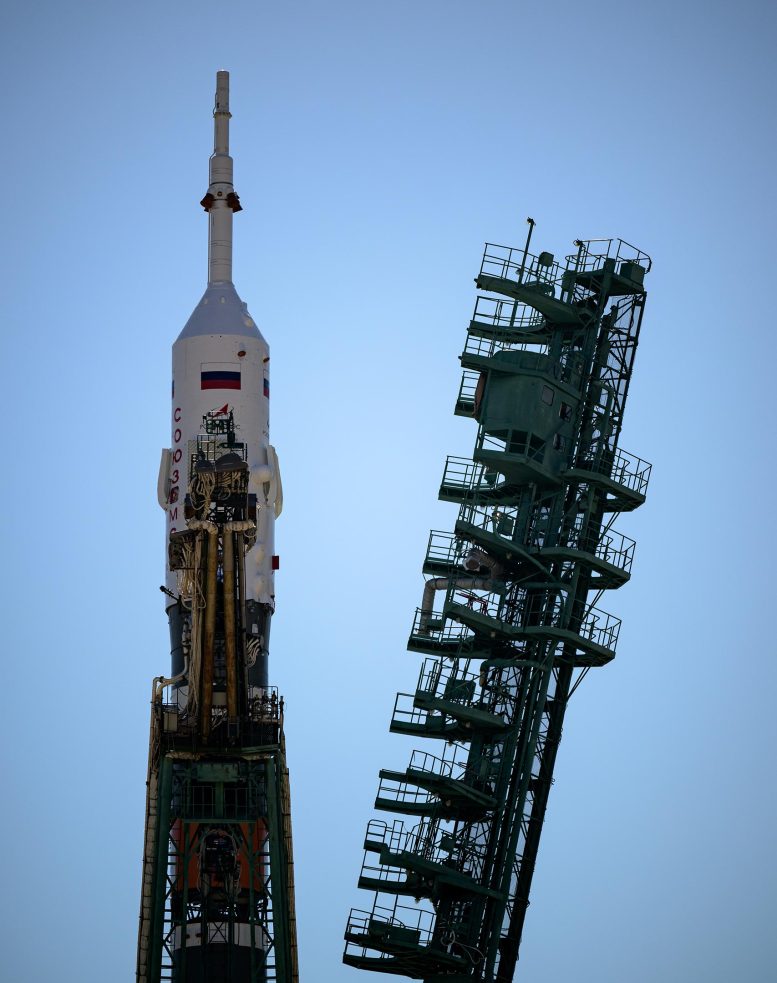
The service structure is raised into position around the Soyuz rocket, Sunday, September 18, 2022, at site 31 of the Baikonur Cosmodrome in Kazakhstan. Expedition 68 astronaut Frank Rubio of NASA, and cosmonauts Sergey Prokopyev and Dmitri Petelin of Roscosmos are scheduled to launch aboard their Soyuz MS-22 spacecraft on September 21. Credit: NASA/Bill Ingalls
The International Space Station (ISS) is gearing up for the arrival of three new crew members due to begin their mission today, Wednesday, September 21. Meanwhile, on the orbiting lab, the Expedition 67 astronauts continue investigating a wide range of microgravity phenomena to benefit humans on and off the Earth.
NASA astronaut Frank Rubio and Roscosmos cosmonauts Sergey Prokopyev and Dmitri Petelin will launch on the Soyuz MS-22 rocket for their trip to the space station. It currently stands at its launch pad at the Baikonur Cosmodrome in Kazakhstan. The trio is scheduled to liftoff inside the Soyuz crew ship at 9:54 a.m. EDT (6:54 a.m. PDT) on Wednesday and dock to the Rassvet module less than three-and-a-half hours later. That will mark the beginning of a six-month research mission in orbit around the Earth. NASA will broadcast the launch live on NASA TV, the app, and its website, beginning at 9 a.m EDT (6 a.m PDT).
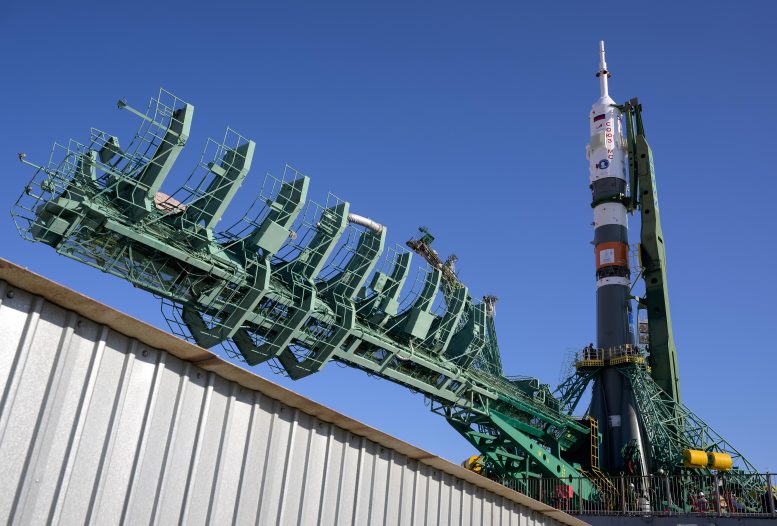
The Soyuz rocket is raised vertical after having rolled out by train to the launch pad, Sunday, September 18, 2022, at site 31 of the Baikonur Cosmodrome in Kazakhstan. Expedition 68 astronaut Frank Rubio of NASA, and cosmonauts Sergey Prokopyev and Dmitri Petelin of Roscosmos are scheduled to launch aboard their Soyuz MS-22 spacecraft on September 21. Credit: NASA/Bill Ingalls
Three cosmonauts who have been living in space since March 18 are scheduled to board their Soyuz MS-21 crew ship and return to Earth just over a week later. The Soyuz vehicle, with station Commander Oleg Artemyev and Flight Engineers Denis Matveev and Sergey Korsakov inside, will undock from the Prichal module and descend through Earth’s atmosphere. Finally, it will parachute to a landing in Kazakhstan, bringing the threesome’s six-month-long orbital journey to an end. In addition to conditioning their bodies for the return to Earth’s gravity on Tuesday, the trio also spent the day packing up cargo and personal gear for stowage inside the returning Soyuz.
During the traditional Change of Command ceremony next week, ESA (European Space Agency) astronaut Samantha Cristoforetti will take over as station commander from Artemyev before he departs. The leadership change will be seen live on NASA TV, the agency’s app, and its website at 9:35 a.m. on September 28.
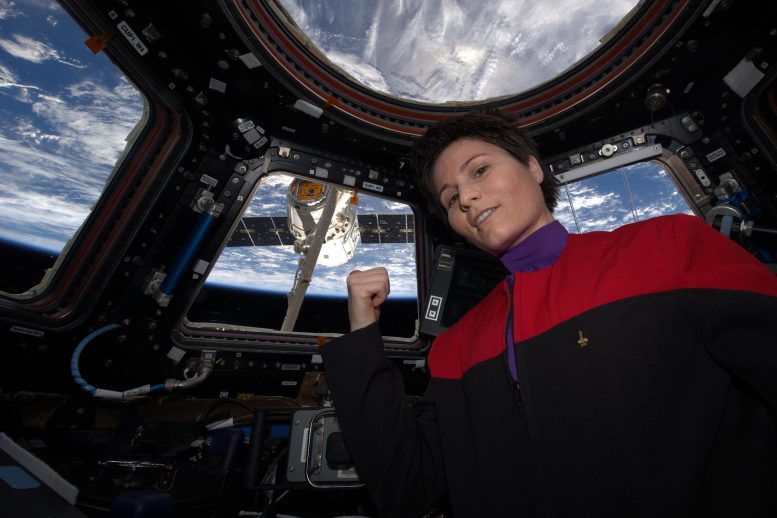
ESA astronaut Samantha Cristoforetti points at the Dragon spacecraft she just grappled on April 17, 2015, with the 16m-long International Space Station robotic arm. Credit: ESA/NASA
Research operations aboard the orbiting outpost are always ongoing whether the astronauts run the experiments themselves or scientists remotely conduct the studies from control centers on the ground. Tuesday’s space science schedule saw the astronauts busy all day exploring biology, botany, physics, and robotics.
Humans and plants are significant topics of study in space as scientists learn to sustain crews in space for longer missions and farther away from Earth. Jessica Watkins, NASA Flight Engineer, scanned her arteries with an ultrasound device and measured her blood pressure on Tuesday to understand the risks of space radiation on the cardiovascular system. Meanwhile, NASA astronaut Bob Hines planted vegetables for the soilless XROOTS botany study that explores using hydroponic and aeroponic techniques to grow crops in space.
Technology is also key to the success of crewed missions. This would allow astronauts to focus more on science activities and become less reliant on ground controllers. Kjell Lindgren, NASA Flight Engineer, looked at how weightlessness affects the microstructures of foam through the KERMIT microscope to advance research and commercial opportunities on Earth and in space. Finally, ESA astronaut Samantha Cristoforetti tested using a smartphone device to guide and control Astrobee robotic free-flyers while assisting crews with scientific operations.


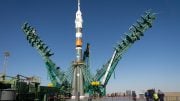


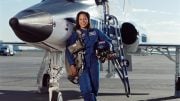
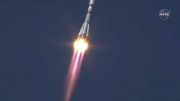
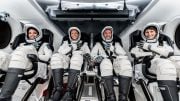
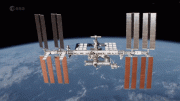
Be the first to comment on "New Space Station Crew Launching Today on Russian Rocket"